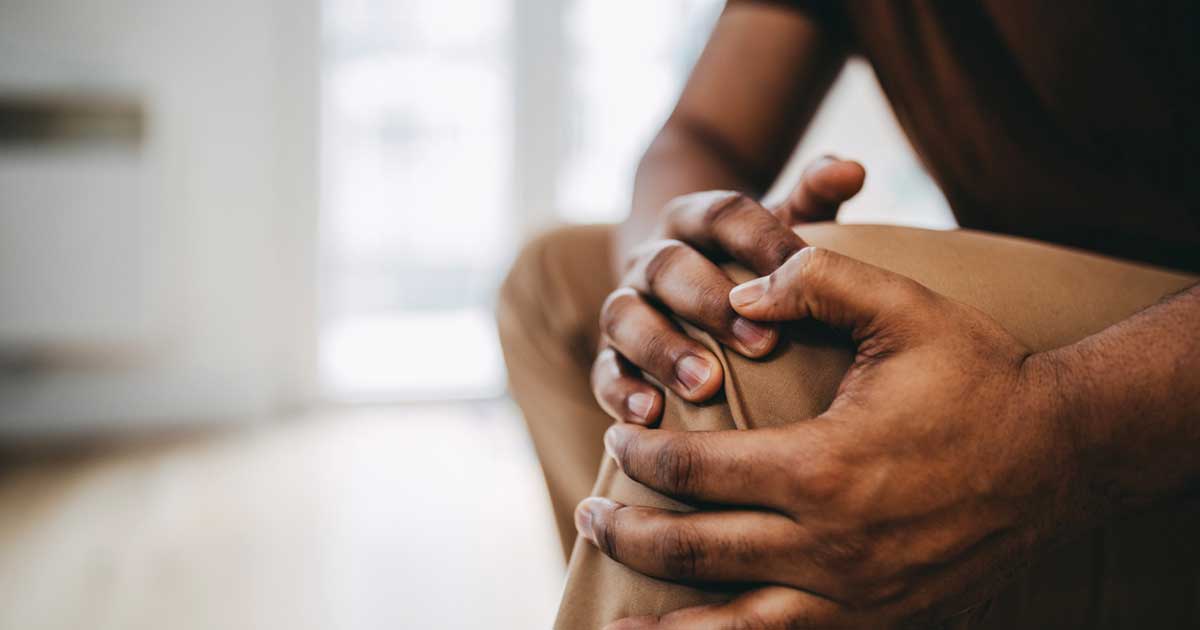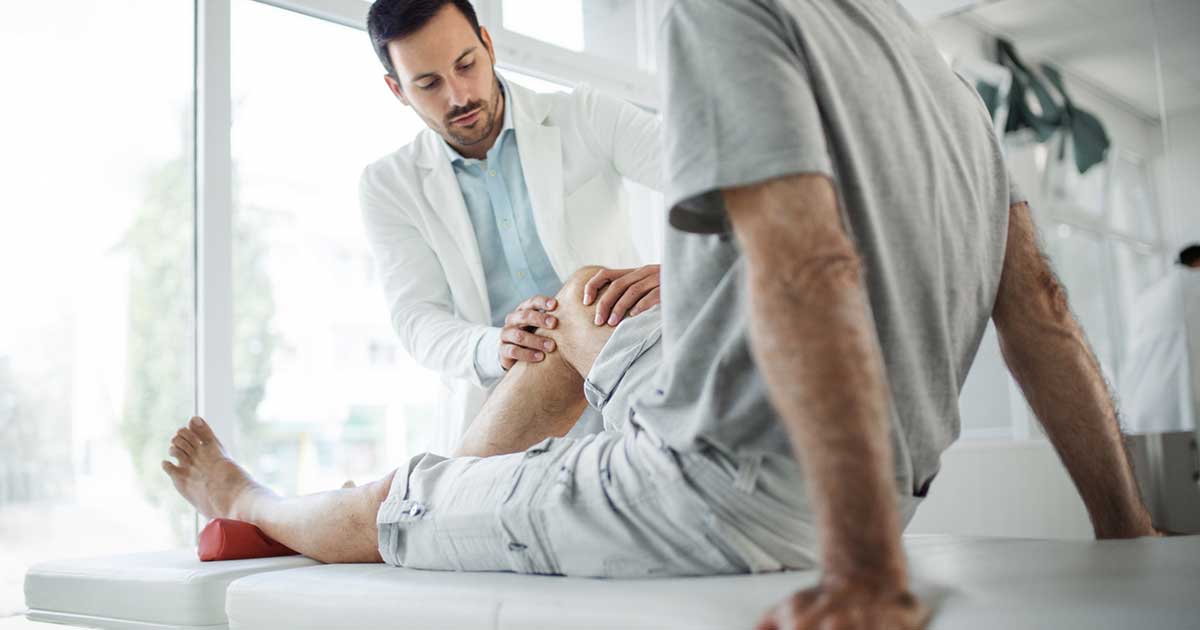What to Know About Joint Pain: Types, Causes and Treatments
Advice to improve your movement, fitness, and overall health from the world's #1 in orthopedics.
Joint pain is an extremely common issue involving discomfort in joints throughout the body. (To back it up even further, a joint is where two bones connect.) About half of US adults aged 50 and older experience joint pain that limits their daily activities. But the term “joint pain” covers a wide range of conditions, and sore joints can have many different causes.

For people experiencing joint pain, it’s important to understand the cause before determining the best way to prevent and treat it.
Here, HSS rheumatology fellow Robert Spandorfer, MD, and orthopedic surgeon Tony S. Shen, MD, discuss what you should know about different kinds of joint pain, its sources and how to know when it’s time to see a doctor.
1. Joints consist of several parts, any of which can play a role in joint pain.
As mentioned, “when we use the term ‘joint,’ we’re talking about any place where two bones come together,” Dr. Spandorfer says. “But it’s a really dynamic space, and there are many elements that can contribute to pain.”
These are the parts of a joint and how they function:
- Ligaments, tough bands of rope-like tissue, hold the bones together.
- Cartilage, a spongy tissue, helps to cushion the bones.
- Synovium, a thin membrane, lines the joints.
- Muscles help to move and stabilize the joints.
- Tendons, which are thick bands of tissue, attach muscle to bone.
- Nerves tell the muscles to move and also are responsible for sending pain signals back to the brain.
A problem with any of these parts can contribute to feelings of pain or discomfort in the joints. For example, worn cartilage in the knee can lead to pain going up and down stairs. Inflamed tendons in the elbow can cause pain in the elbow when using your wrist.
2. There are different ways to feel joint pain.
Joint pain may be described as stabbing, aching, burning or tingling. It may be constant, or it may only occur when the joint is stressed or held at certain angles. These differences can give a clue about the underlying causes of the pain as well as whether the problem is actually in the joint itself.
“One place to start is determining whether the pain is intrinsic or extrinsic to the joint,” Dr. Shen says. “Intrinsic pain comes from inside the joint. Extrinsic pain is actually caused by inflammation or other problems around the joint.”
Some types of joint pain may be worse in the morning and start to feel better after the joint moves around in the course of daily activities. Other types may get worse throughout the day, especially after exercise or other strenuous movements.
3. There are many causes of joint pain.
There are multiple reasons why your joints may ache. Figuring out the origin of the pain is the first step toward finding the right treatment.
- Injury. One of the most common reasons for joint pain, damage to the joint may be caused by falling and landing on your shoulder, knee, or hip; twisting an ankle or wrist; or straining a tendon or ligament through overuse.
- Osteoarthritis. Think of this as the normal wear and tear on your body. As the body ages, certain parts of the joints, especially the cartilage, can start to break down. For that reason, the incidence of osteoarthritis (OA) tends to increase as people get older. But some individuals are more susceptible to OA, including those who are overweight, have a history of injury to a particular joint, or carry certain genetic risks.
- Autoimmune diseases. This category includes conditions like rheumatoid arthritis, psoriatic arthritis and lupus. Unlike osteoarthritis, autoimmune or inflammatory arthritis is caused by the body’s own immune cells attacking the joints. People of any age can have an autoimmune disease, but these conditions most commonly arise in teens and younger adults, especially women. Both genetic and environmental factors contribute to autoimmune diseases, and many of the underlying triggers are still not well understood.
- Gout. This condition occurs when there are high levels of a compound called uric acid in the bloodstream. The uric acid forms crystals that settle in the joints. (For this reason, gout is sometimes called crystalline arthritis.) Gout is often triggered by eating certain foods. Just like with other joint issues, some people are more susceptible to gout than others. It usually comes on quickly and most often affects the joints in the big toes.
- Inflamed or pinched nerve. This can occur when the nerve that goes to a joint has pressure put on it. One of the most common examples of this type of pain is carpal tunnel syndrome, in which one of the nerves in the hand is squeezed or compressed, causing pain in the wrist. Another common example is when compressed nerves in the spine lead to pain in the hips.
- Joint infection. Infections are a much rarer cause of joint pain, but they can be much more dangerous. If you have a serious infection somewhere else in your body, it can spread through the blood and settle in a joint. Joint infections usually come on quickly and are accompanied by fever, chills, and other signs of infection, such as redness or swelling around the joint.
4. Treatments for joint pain depend on its causes.
If your pain is very bad and you know you’ve had an injury in the area, or you think it may be caused by an infection, it’s important to see a doctor right away.
Otherwise, joint pain can typically be treated at home through the use of:
- ice
- heat
- wraps or braces
- over-the-counter medications like ibuprofen (Advil) and acetaminophen (Tylenol)
Other types of joint pain may require help from a doctor or physical therapist. They may suggest having an X-ray or MRI to determine the underlying causes of your pain.
If your joint pain is caused by osteoarthritis and is still in the early stages, a doctor can often help you manage it with oral anti-inflammatory medications and corticosteroid injections. “We also know that strength conditioning helps joint health in general, so physical therapy can be helpful,” Dr. Shen says. “But these treatments are only temporary, and if your pain continues to get worse, it may be time to consider surgery.”
The type of surgery depends on the joint. “For hips and knees, joint replacements are very effective at eliminating pain,” Dr. Shen says. “For other joints such as those in the midfoot, a fusion procedure may be the best option.”
If your pain is caused by an autoimmune disease like rheumatoid arthritis, prescription medications tend to be more effective than over-the-counter drugs and may have fewer side effects when used long term. “We can do bloodwork and other tests to determine which medications are best for your individual condition,” Dr. Spandorfer says.
“We all know our own bodies,” Dr. Spandorfer adds. “If you’re recognizing a pain that doesn’t seem normal for you, that’s always a good reason to go see a doctor.”



